One of the first questions that comes up when people get new ducks is, “What sex are they?” Identifying the sex of ducks, especially ducklings, can be difficult.
In this article, I’ll cover two methods for sexing ducklings (plus seven methods that don’t work, are unreliable, or are only small clues) and six methods of sexing adult ducks or juveniles.
If you have Muscovy ducks, read my article on sexing Muscovies instead. Most of this article doesn’t apply to Muscovies.
How to sex young ducklings
Method #1: Vent sexing
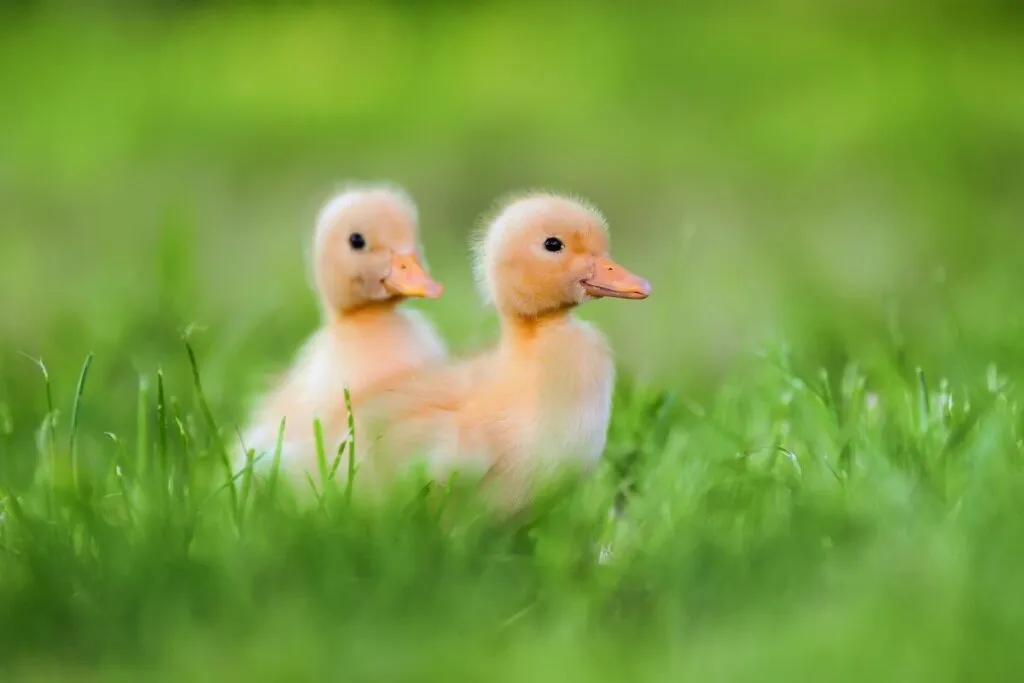
There is only one reliable way to sex young ducklings: vent sexing.
Vent sexing involves physically manipulating a duckling’s vent, or cloaca, to evert the sexual organs. If done right, it is, of course, accurate.
Here’s a video from Metzer Farms about how it’s done:
This is best done on day-old ducklings, but can be done on ducks of any age.
However, it’s not a good method for beginners. It’s easy to hurt the duckling if you’re not careful or not sure what you’re doing. Also, it’s easy to obtain an inconclusive result: if you see a penis, you have a male; if you don’t, you either have a female or you did it wrong.
If you want to learn vent sexing, ask someone experienced to show you how before attempting it yourself. Otherwise, I don’t recommend it.
Method #2: Bill and plumage color
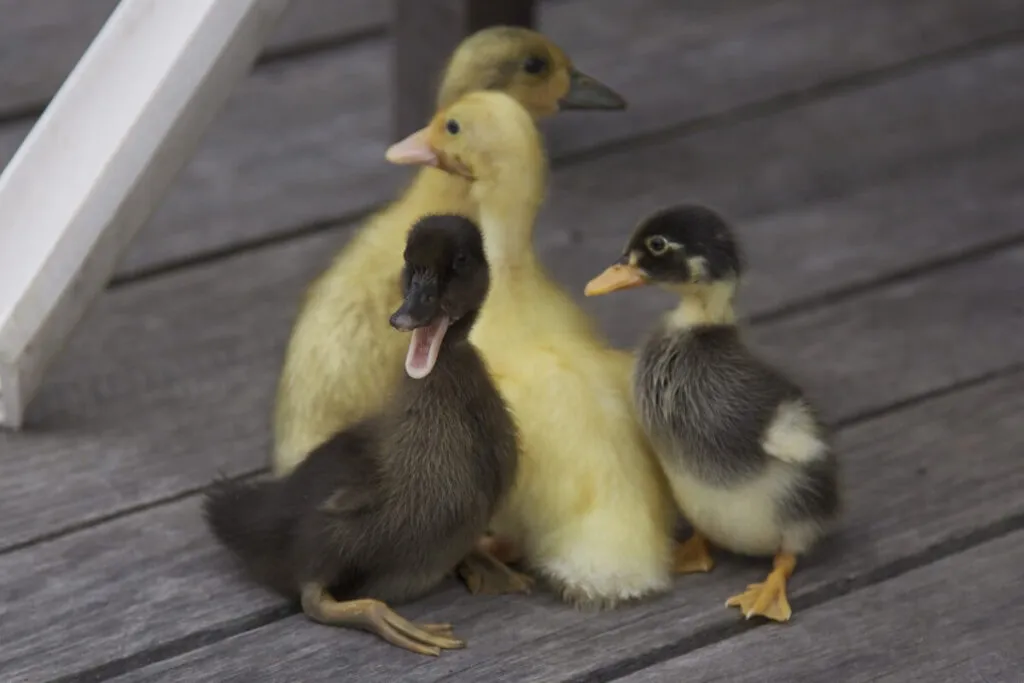
You may have heard of autosexing chickens or geese, where male and female hatchlings can be identified by their down color. Unfortunately, there are no true autosexing ducks.
However, there is one breed where ducklings can (sometimes) be sexed by bill color: the Welsh Harlequin.
Female ducklings will have pinkish bills with a dark bean, while male ducklings will have dark bills.
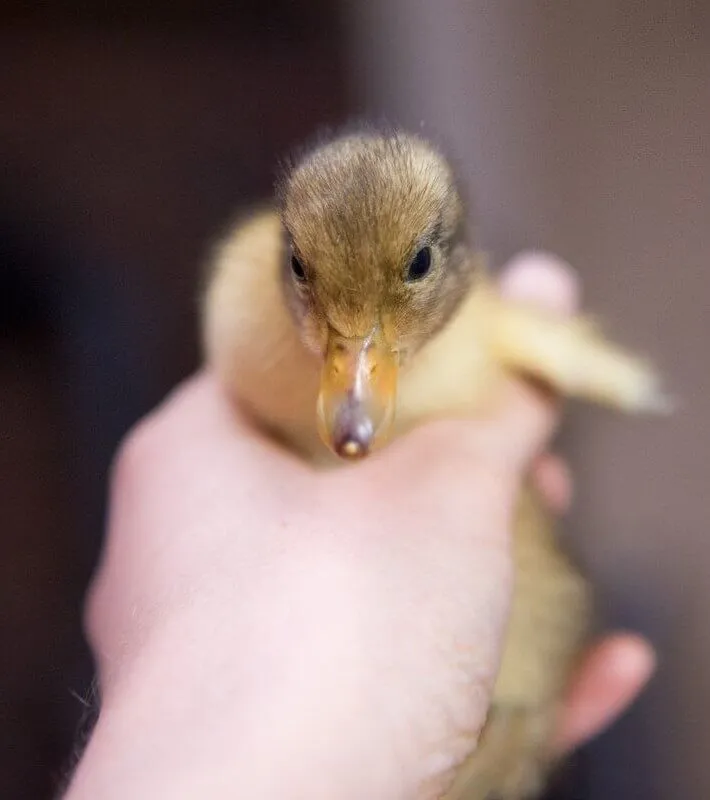
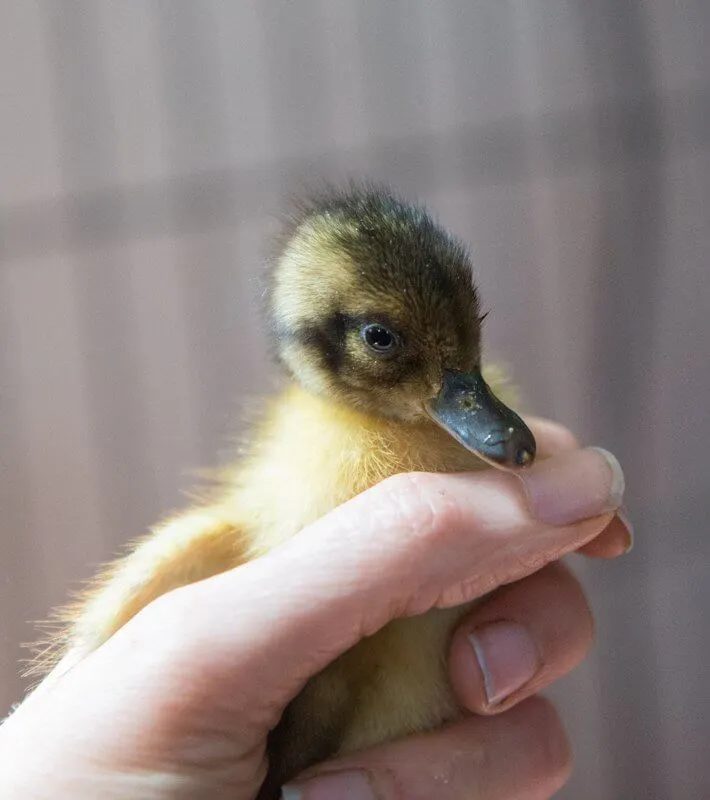
By the time they’re about four days old, the females’ bills will have darkened and the difference will no longer be distinguishable.
Unfortunately, it’s not always reliable. In the 2000 edition of Storey’s Guide to Raising Ducks, Dave Holderread says he has found day-old bill sexing to be approximately 90% accurate. Furthermore, this trait is easily lost in breeding unless care is taken to preserve it, so in many lines, bill color sexing is difficult, unreliable, or impossible. I have seen some people say that it works well on high-quality bloodlines and not on hatchery stock, while other people say it works well on hatchery stock but not on show-quality birds.
Beyond the Welsh Harlequin, there are also a few crosses that will produce sex-links where males and females have differently-colored down upon hatching. Sex-linking differs from autosexing in that it is only the result of crossbreeding and won’t carry through to future generations, while autosexing is found in pure breeds.
Some examples:
- The Golden 300, Golden Layer, and Gold Star hybrid, sold by various hatcheries, are sex-linked crossbreeds where males are shades of black and females are shades of brown.
- Crossing a purebred Golden Cascade drake with any other duck will result in sex-linked ducklings where the males are dark brown and the females light brown. (If you see Golden Cascades for sale that are purported to be autosexing, that likely means that they have already been crossed with another breed. Some sources sell Golden Cascade crosses rather than pure Golden Cascades, which are not autosexing.)
- Crossing a Khaki Campbell drake with a black female duck (Cayuga, Swedish, etc.) will create a sex-linked crossbreed where, like above, the males are black and the females are brown.
- Crossing a Khaki Campbell drake with a Silver Welsh Harlequin also results in a similar sex-link.
- Crossing a Khaki Campbell drake with a Dark Khaki Campbell duck will produce khaki females and dark drakes.
- Crossing a Gold Welsh Harlequin drake with a Silver Welsh Harlequin duck will create sex-links where drakes are silver and ducks are gold.
- In Muscovies, the chocolate gene is sex-linked. A chocolate drake crossed with a black, blue, or self-blue duck will produce sex-linked ducklings of different colors.
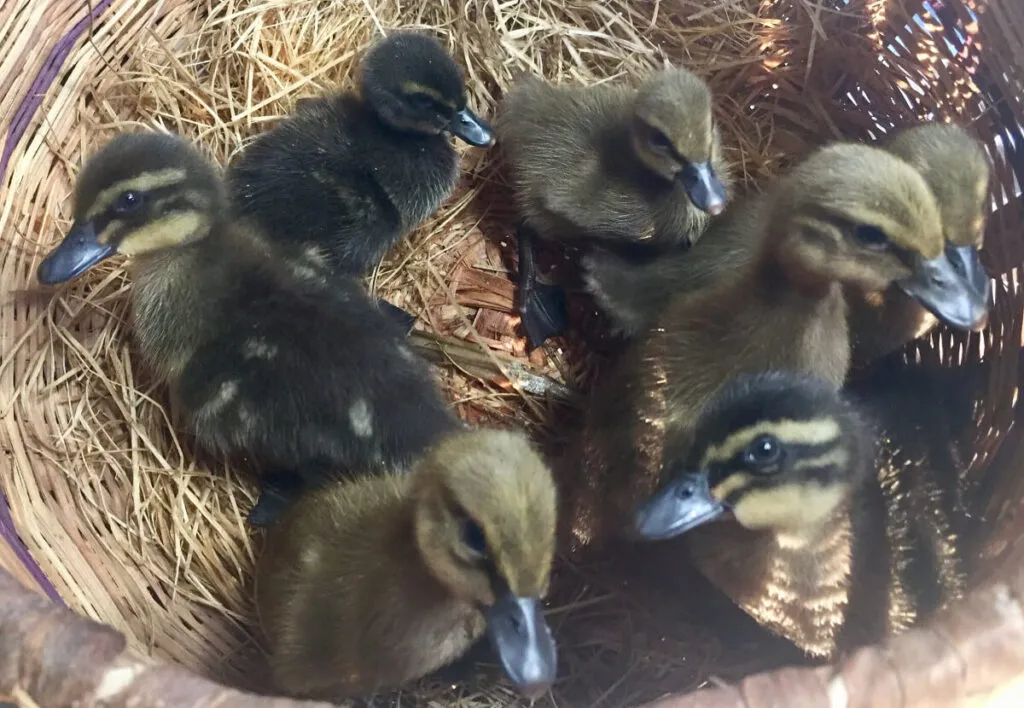
These ducklings are a cross between a Khaki Campbell drake and a Silver Welsh Harlequin hen. The three males are very dark, nearly black, while the females are a lighter brown.
This is not an exhaustive list. There are many combinations that can create sex-linked offspring. Here are a few resources with more information:
Method #3: Other clues?
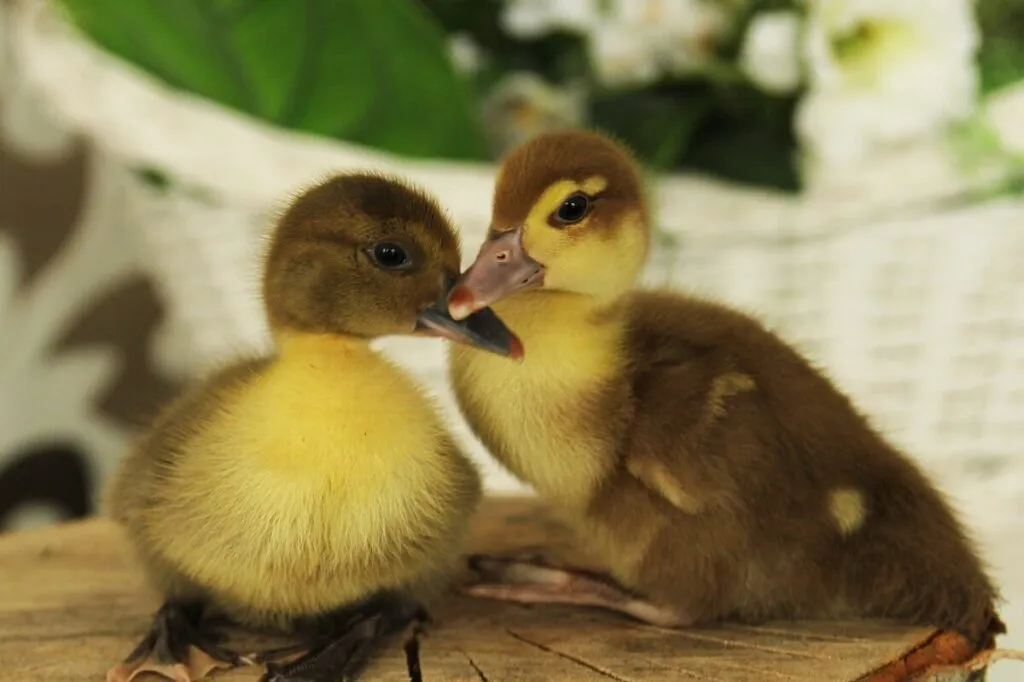
It’s time to move on to juveniles and adults.
What? That’s the end of the duckling section?
Yes.
If vent sexing isn’t an option, and if you don’t have Welsh Harlequins or a sex-linked cross, you will be forced to wait. There are no effective, reliable ways to sex a duckling before they start quacking.
Yes, you might read or hear about some other methods. Here are methods for sexing ducklings that don’t work or are unreliable:
1. Size
You will not see a size difference between male and female ducklings. Male ducklings are not larger, taller, or heavier than females. In most breeds, there is a small size difference between adult males and females, but it’s unlikely to be evident in ducklings. The exception is the Muscovy, where males often outgrow females after a month or two.
2. Feet
If you hear anyone say male ducklings have larger feet, they are probably talking about Muscovies. Male Muscovy ducklings often have visibly larger and thicker feet once they’re a few weeks old to a few months old. However, this is not a useful indicator for any other type of duckling. Males do not really have larger, thicker feet or a wider stance.
3. Voice
Male and female ducklings have the same voice as ducklings, so you cannot identify a duckling’s sex by its baby voice. However, it’s common for ducklings to transition to their adults voices at very young ages, possibly as early as two weeks.
Some people think female ducklings are louder and noisier than males even while their voices are the same. This may or may not have any truth in it, but it’s definitely not reliable.
4. Wing growth
Some say female ducklings’ wings grow faster. This is true of Muscovies, but not of Mallard-derived ducks.
5. Feather sexing
“Feather sexing” does not work for ducklings, only certain sex-linked crosses in chickens.
6. Bean color
Some say you can sex some ducks by the color of the bean on the tip of the bill. This is not true. Bean color means nothing.
7. Behavior
Some say males are clumsier and lazier, while females are more active. I find this to be somewhat sort of true in Muscovies. I’m not sure about Mallard-derived ducklings.
Some also say males are friendlier and like to nibble fingers and clothes more than females. This, too, is something I have sort of noticed, but it’s certainly nothing reliable. There are plenty of friendly females and skittish males.
In any case, “clumsiness,” “activeness,” and “friendliness” aren’t exactly quantifiable traits. You can keep an eye out and have fun guessing based on what you observe, but don’t place much faith in these traits.
How to sex older ducklings and adults
Method #1: Vent Sexing
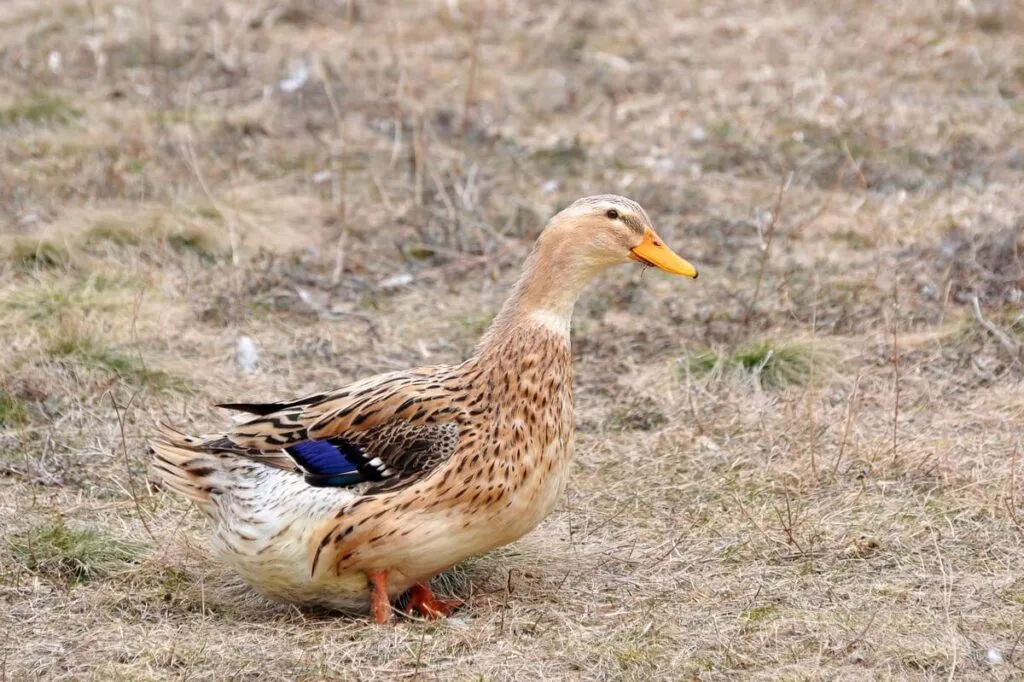
Vent sexing works on adult ducks as well. It’s more difficult to do, but there is less risk of causing injury to the duck. However, again, it’s not recommended unless you know how to do it.
Method #2: Voice
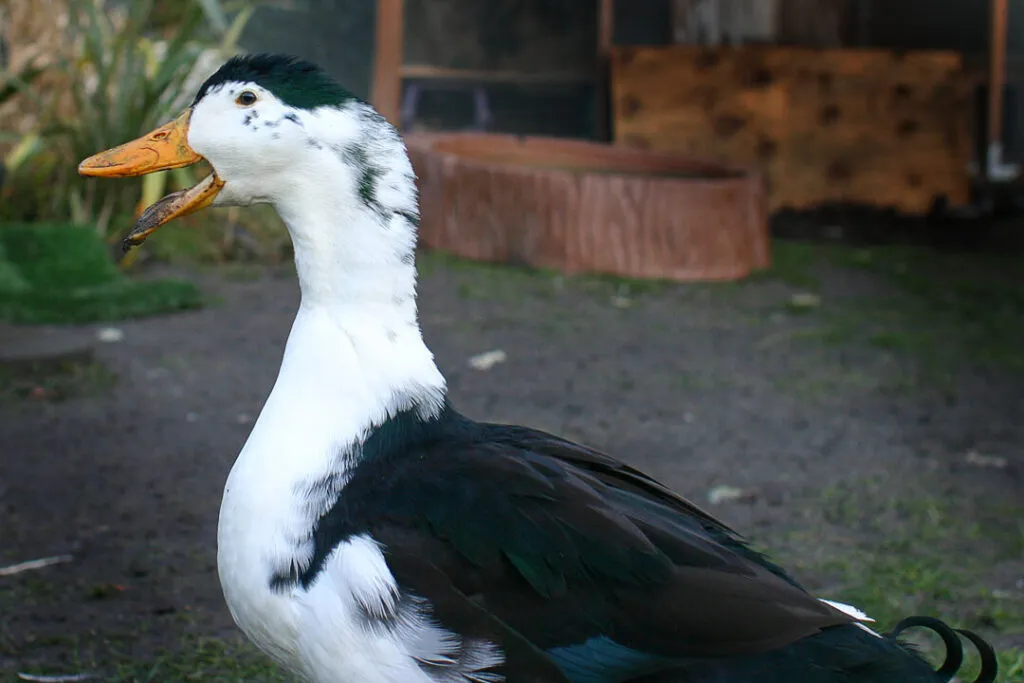
Photo credit: “Aaaaaak!” (CC BY-NC-ND 2.0) by tifotter
The classic, archetypal “quack” sound is that of a female duck. Male ducks only make a hoarse, croaky, rasping sound.
Because the difference between male and female ducks’ quacks is so evident, voice sexing is often the best way to identify your duck’s sex. It’s fairly easy, reliable, and the difference shows up long before the ducks are fully mature, so you usually don’t have to wait very long.
Male and female ducklings sound the same at first, and after a few weeks, the females’ voices change and they start quacking. Males also transition to their adult voices after a few weeks, although they usually take longer than females. Females are also louder than males.
This page has good audio clips demonstrating male and female quacks: http:
Here are two videos showing what a male duck’s “quack” sounds like:
And here are three videos showing female ducks quacking:
This video shows compares the quacks of both male and female Pekin ducks:
When do ducks start quacking?
Young female ducks usually start quacking at 4-6 weeks of age. However, it’s possible for their voices to change as early as 2 weeks or as late as 10 weeks.
Drakes usually gain their adult voices a little later, usually around 6-12 weeks of age, occasionally even 16 weeks.
If you don’t hear quacking by ten weeks, you probably have a boy.
Early quacking (or quack-like sounds) from two- or three-week-old ducklings may not be a reliable clue. These are more likely females, but sometimes they turn out to be males after all.
Method #3: Bill color
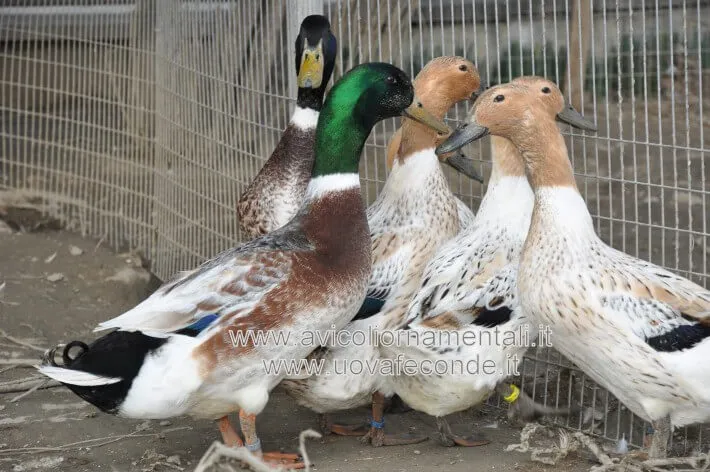
In this flock of Abacot Ranger ducks, notice how the males have yellowish bills and the females have dark gray bills. Photo used with permission from avicoliornamentali.it.
In a few breeds, male and female ducks have different bill colors. The difference is not apparent in ducklings, but usually becomes visible around 8 weeks of age, or anywhere from 6-9 weeks.
This is usually before plumage differences become apparent, so if you’re struggling with telling male and female voices apart and if you have one of the breeds that can be sexed by bill color, this trait can be quite handy.
However, be careful and don’t rely on bill color for sexing too much. It’s often an inconsistent trait, especially in some breeds and lines.
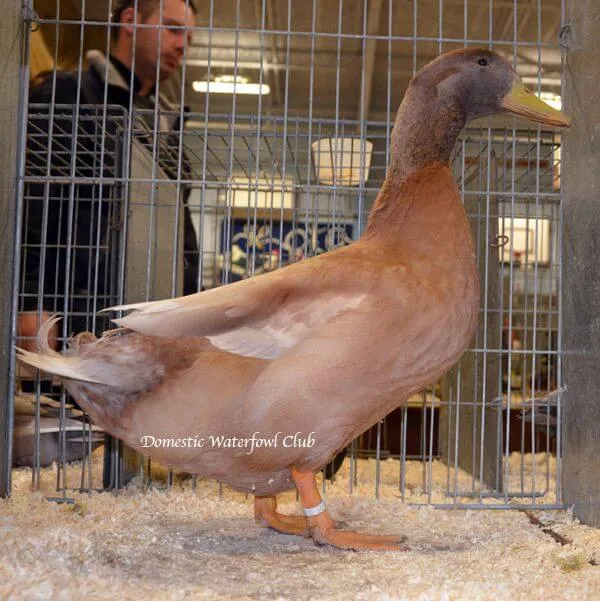
A male Buff Orpington with a yellow bill. Photo used with permission from The Domestic Waterfowl Club of Great Britain.
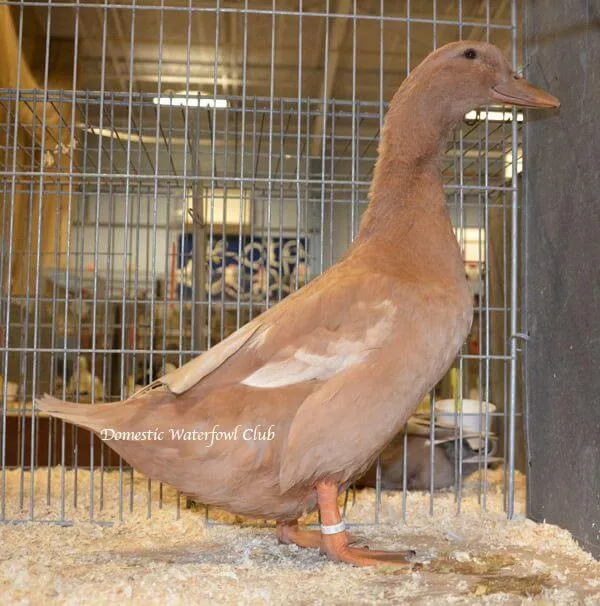
A female Buff Orpington with an orange-brown bill. Photo used with permission from The Domestic Waterfowl Club of Great Britain.
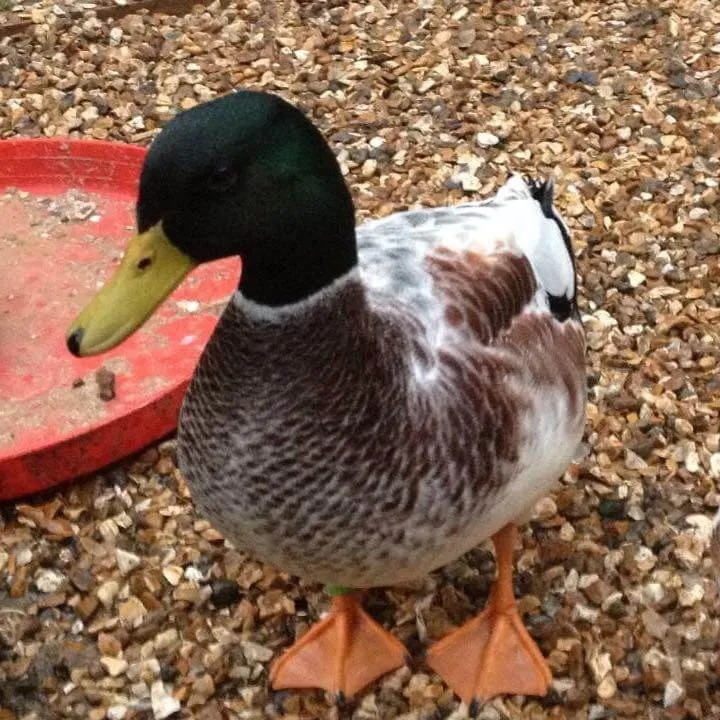
A Silver Bantam drake with a yellow-green bill. Photo used with permission from Vicky Quick.
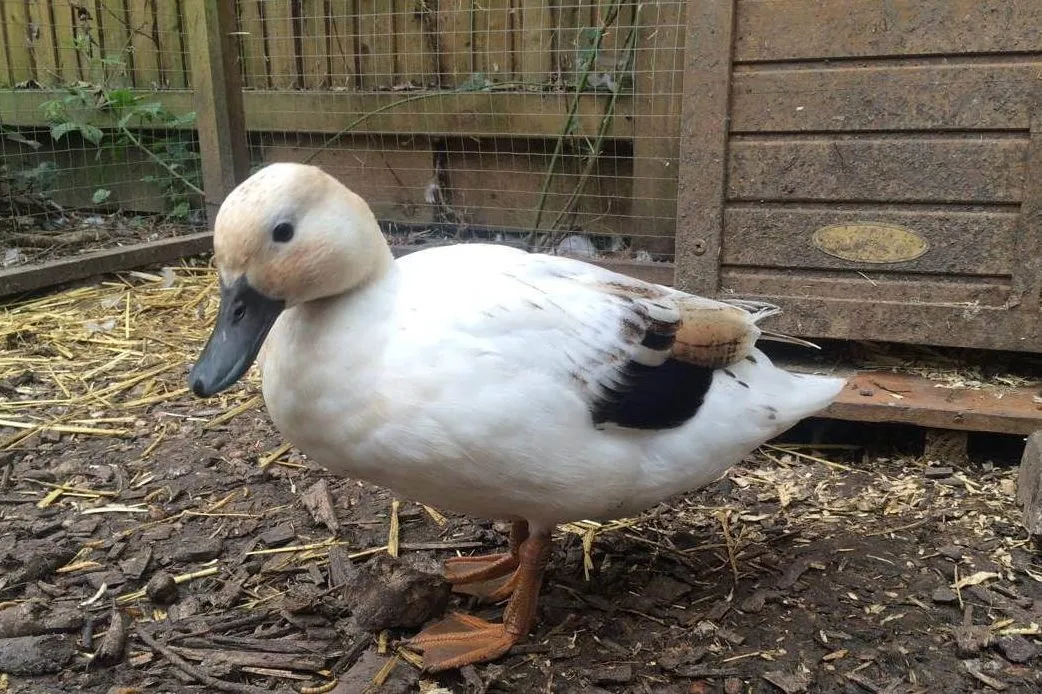
A Silver Bantam duck with a slate gray bill. Photo used with permission from Vicky Quick.
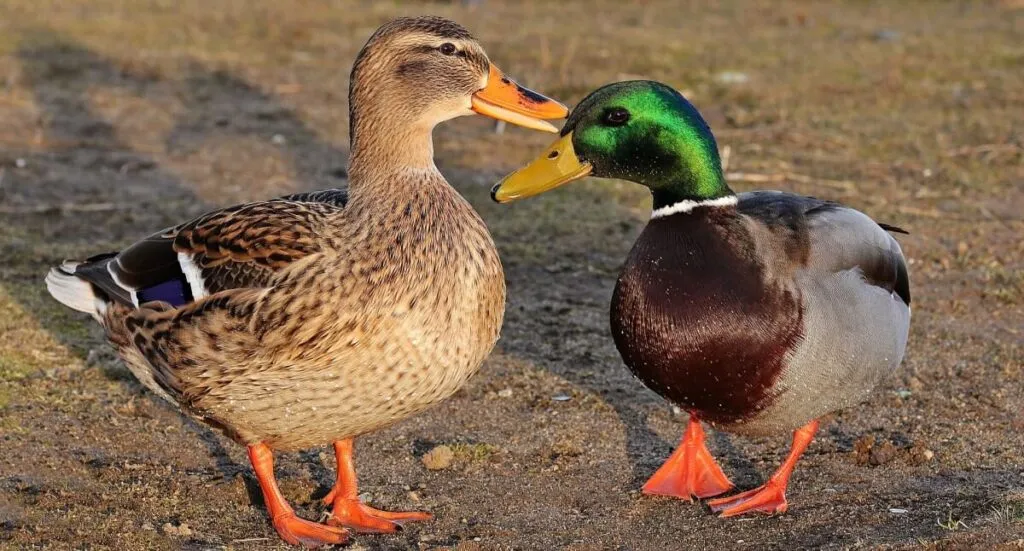
A female Mallard with an orange bill and a male Mallard with a yellow bill.
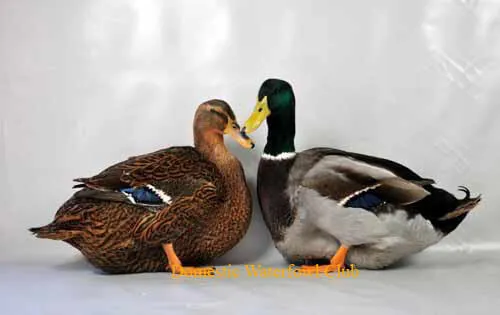
A female Rouen with an orange bill and a male Rouen with a yellow bill. Photo used with permission from The Domestic Waterfowl Club of Great Britain.
| Breed | Male Bill Color | Female Bill Color | Notes |
|---|---|---|---|
| Abacot Ranger | Olive green | Dark slate gray | |
| Blue Swedish | Greenish blue | Blue/slate gray | |
| Buff Orpington | Yellow | Orange-brown | Cannot be relied on |
| Mallard | Yellow | Orange/brown/gray | Cannot be relied on |
| Rouen | Yellow | Orange/brown/gray | Cannot be relied on |
| Saxony | More green shading | More brown shading | Often there is no difference |
| Shetland | Olive green or yellowish | Black or brownish | Unknown reliability |
| Silver Appleyard | Greenish yellow | Orange | Both sexes can have yellow bills |
| Silver Appleyard Miniature | Greenish yellow | Orange | Both sexes can have yellow bills |
| Silver Bantam | Olive green | Slate gray | |
| Welsh Harlequin | Olive green or yellowish | Dark gray | |
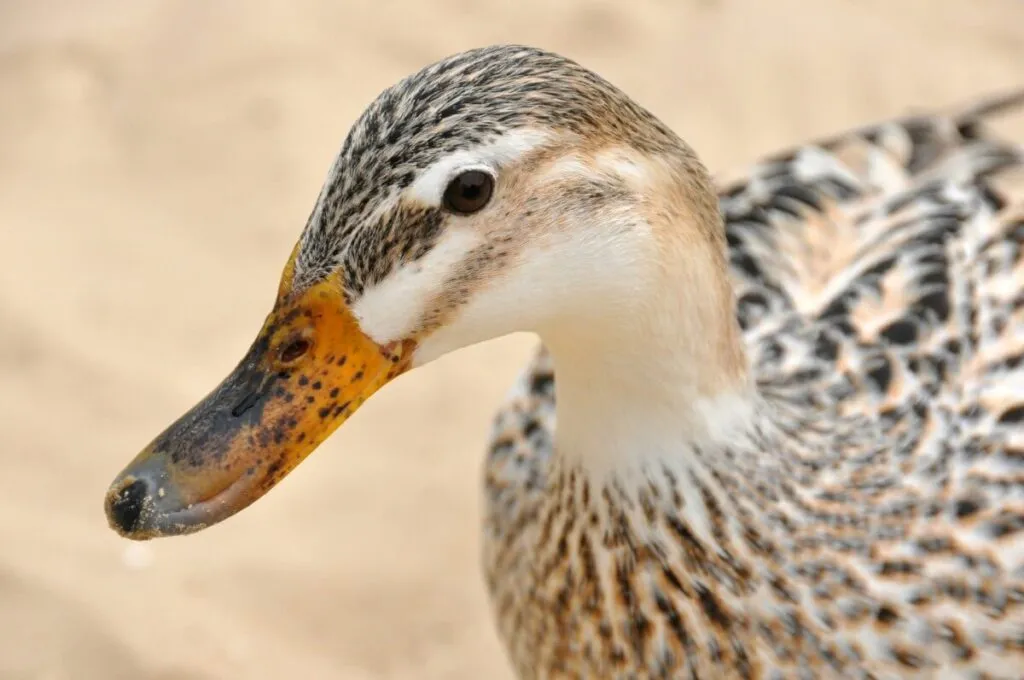
A female duck with a speckled bill. Photo credit: “Duck!” (CC BY-NC-ND 2.0) by davespilbrow
In addition, bill speckles can be a clue. Due to hormones, laying female ducks often gain speckles on their bills. A duck with a freckled bill is often a female, while a duck without freckles could be either sex.
Method #4: Drake feather
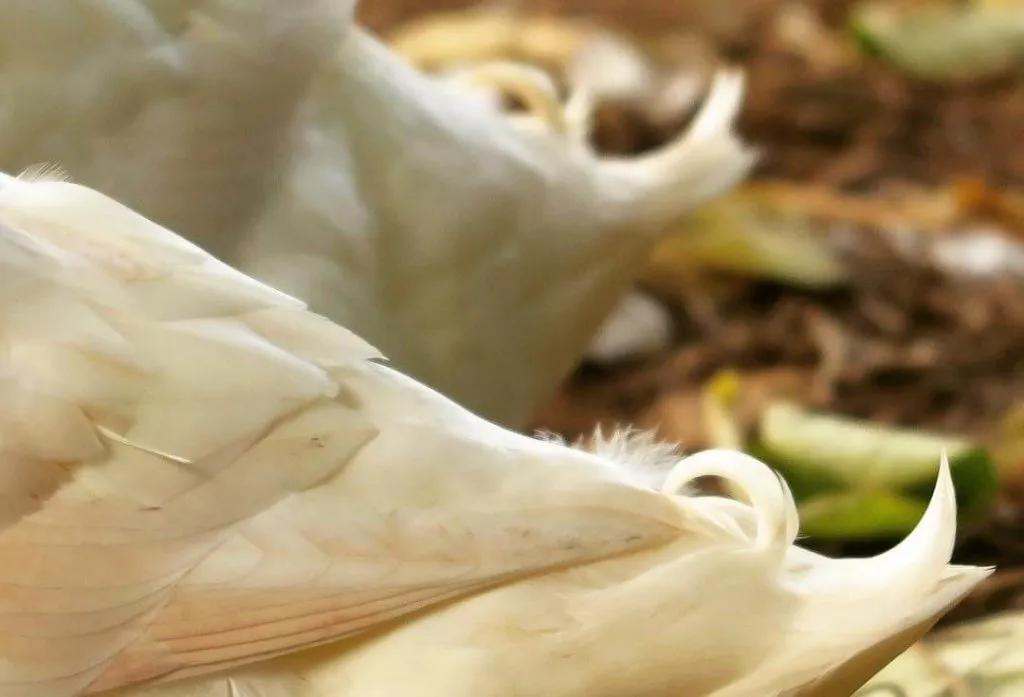
Often, an easy way to spot a drake is the blatant signpost they carry on their tail: the drake feather, also called the drake curl or sex feather.
This tail feather is prominently curled and instantly identifies its owner as a drake. Some drakes have two or more drake feathers.
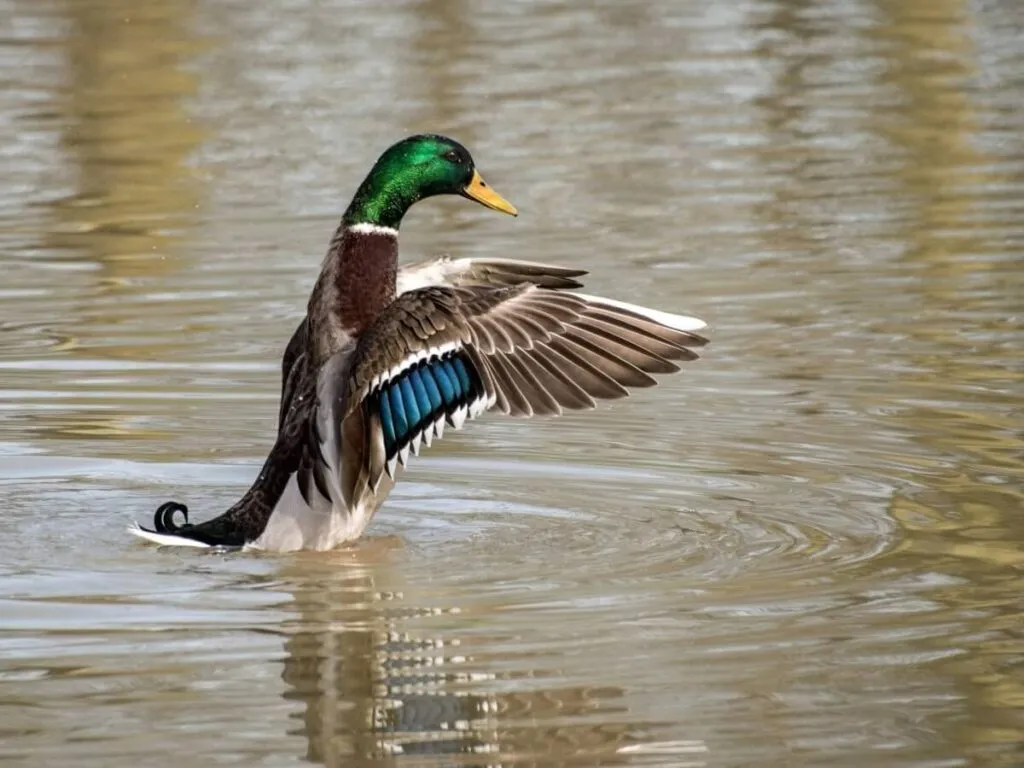
This drake has two easily-spotted drake curls.
Here, of course, comes the “but.” If it was always that easy, no one would doubt their duck’s sex.
There are three reasons a drake might be missing the drake feather:
1. He’s young and hasn’t grown it yet.
The drake feather usually starts curling when a drake is 8-16 weeks old. Sometimes, it doesn’t show up until 18 weeks.
2. He lost it.
Ducks lose a feather or two here and there throughout the year, and sometimes feathers get ripped out in scuffles. If the drake feather is lost, it may not grow back until the drake molts.
More commonly, though, the drake will lose his drake curl during the summer/fall molt and won’t have it while he’s in eclipse plumage. He’ll only grow it back during the spring molt, when he returns to nuptial plumage. It’s also possible, though less common, for drakes to lose their drake curl during the spring molt and not grow it back until a later molt.
Hence, it’s common for drakes spend a good portion of the year without their drake curl.
3. He just…doesn’t have it.
Occasionally, a drake just won’t have his drake feather.
Similarly, it’s possible for females to develop drake curls, probably due to hormonal imbalances. This is rare, though.
Looking for a drake curl or the lack thereof is one of the easiest ways to identify your duck’s sex, but it’s not 100% reliable. If you see one, you can assume you have a drake. If you don’t, look for other evidence.
Method #5: Plumage
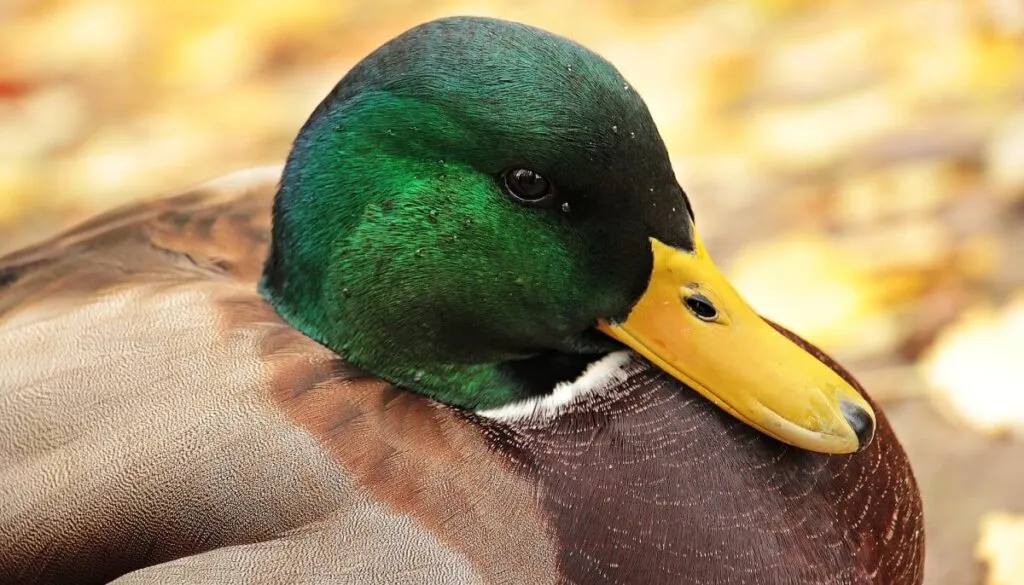
This resplendent green head could only belong to a drake.
In many breeds of ducks, males and females have different colors and patterns. Males typically have brighter colors and flashier patterns, while females will have duller, less ostentatious plumage. For example, in some breeds, such as the Mallard shown above, males have iridescent green heads, while females have dull brown heads.
At first, when young ducks start gaining their feathers (their juvenile plumage), males and females look the same. However, around 12-16 weeks, males transition into their showy nuptial plumage.
While drakes are in their nuptial plumage, it’s easy to distinguish them from females. Unfortunately, after breeding season, in summer or early fall, drakes molt, swapping out their nuptial plumage for eclipse plumage, which looks a lot like a female’s plumage. They molt back into nuptial plumage in late winter or early spring, but for a good portion of the year, they look similar to females.
Here are some examples (see “Bill Color” for more picture examples):
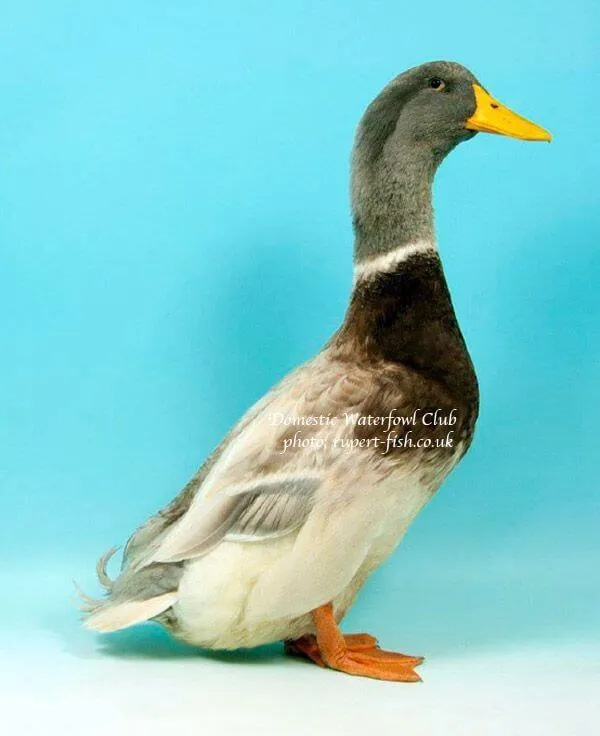
A Saxony drake. Photo used with permission from The Domestic Waterfowl Club of Great Britain.
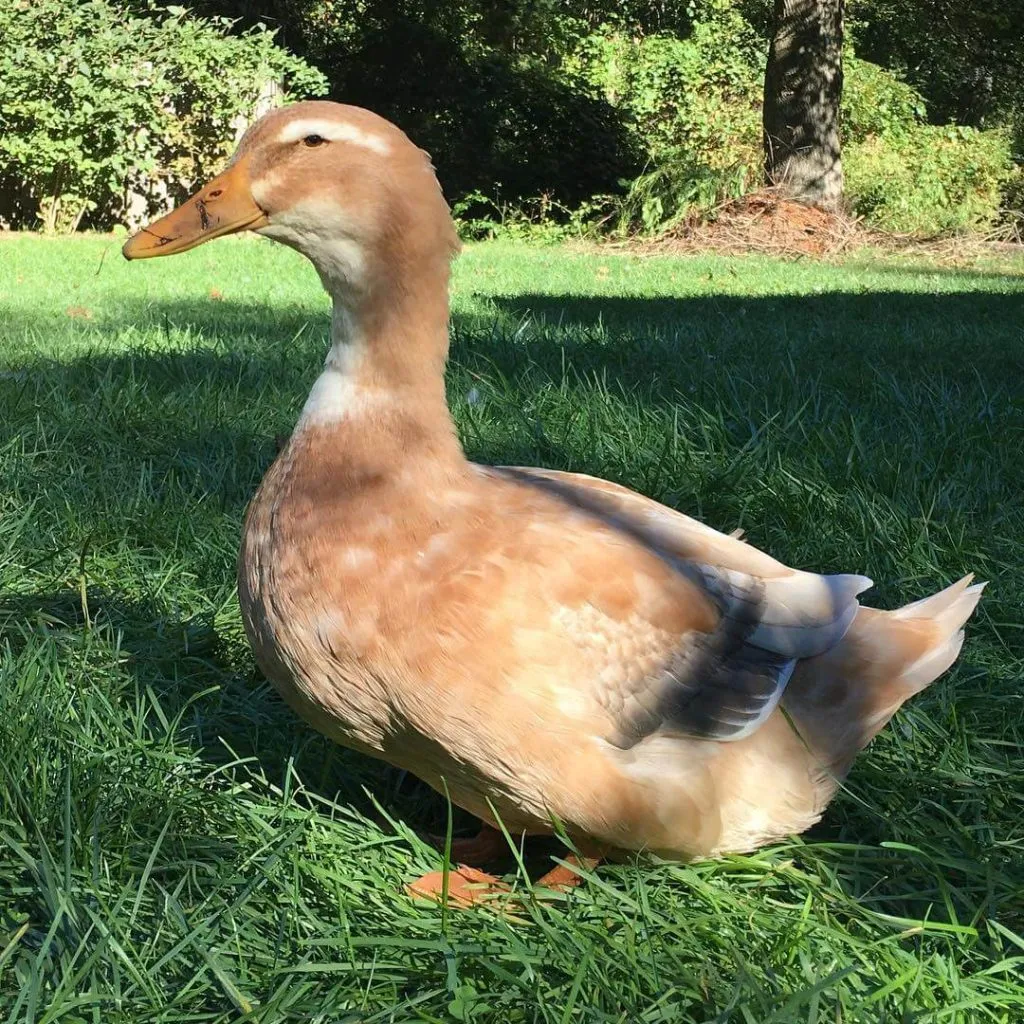
A Saxony duck. Photo used with permission from Michaela Knott.
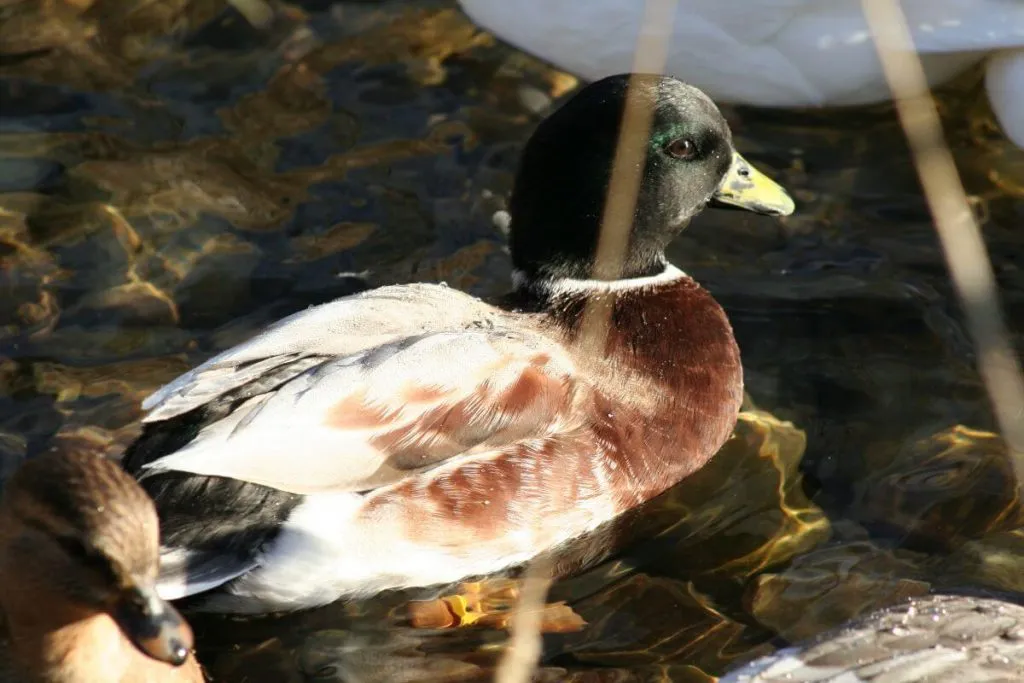
A Silverhead Australian Spotted drake. Photo used with permission from Beau McLean of Duck Creek Farm.
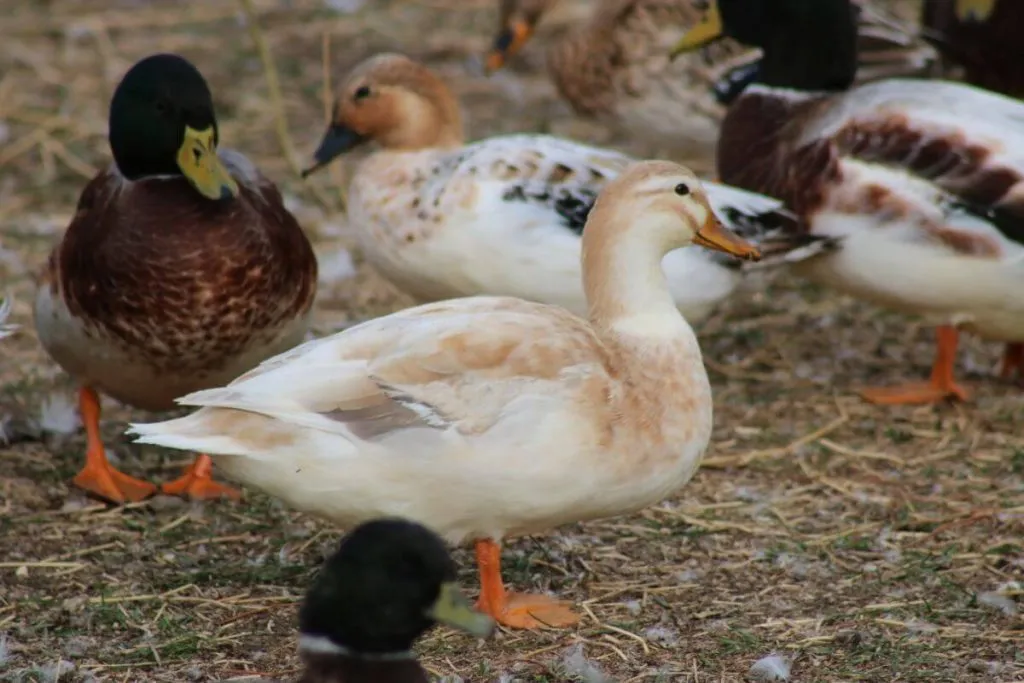
A Silverhead Australian Spotted duck. Photo used with permission from Beau McLean of Duck Creek Farm.
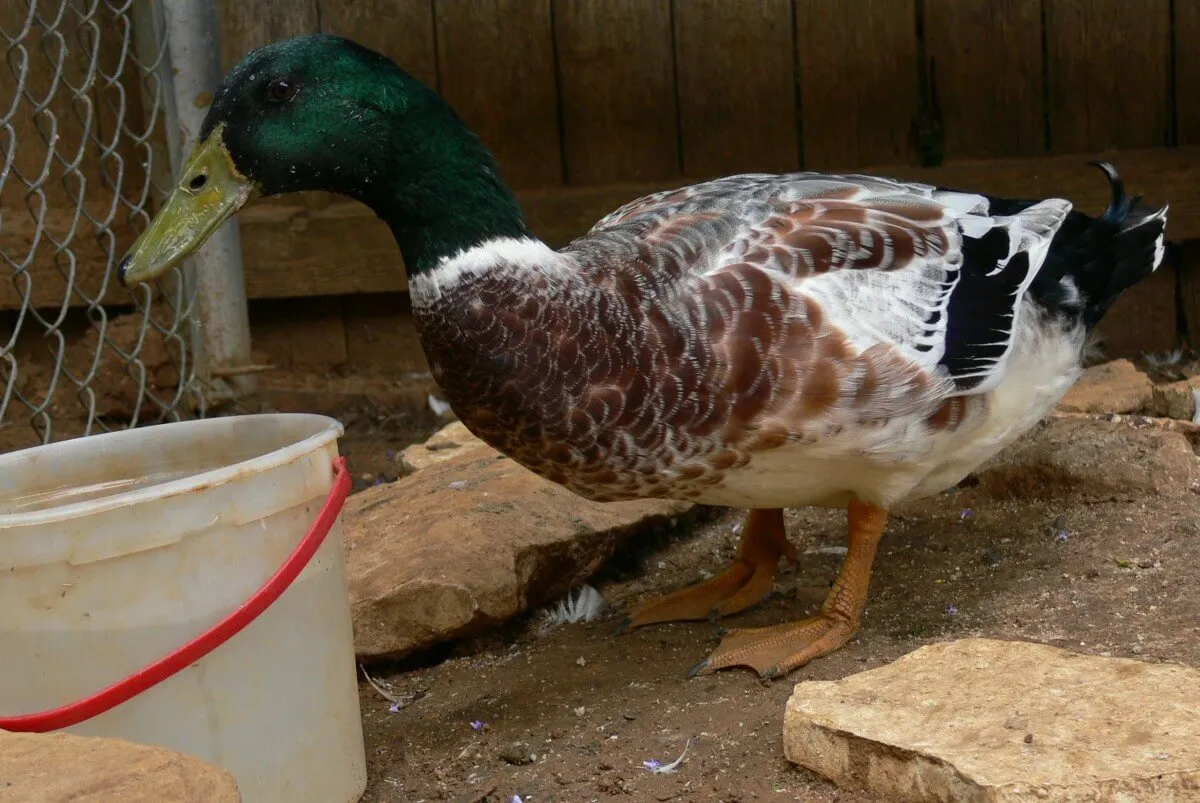
A male Welsh Harlequin with a yellow-green bill. Photo credit: “Pretty Drake” (CC BY-NC 2.0) by April Shuyler
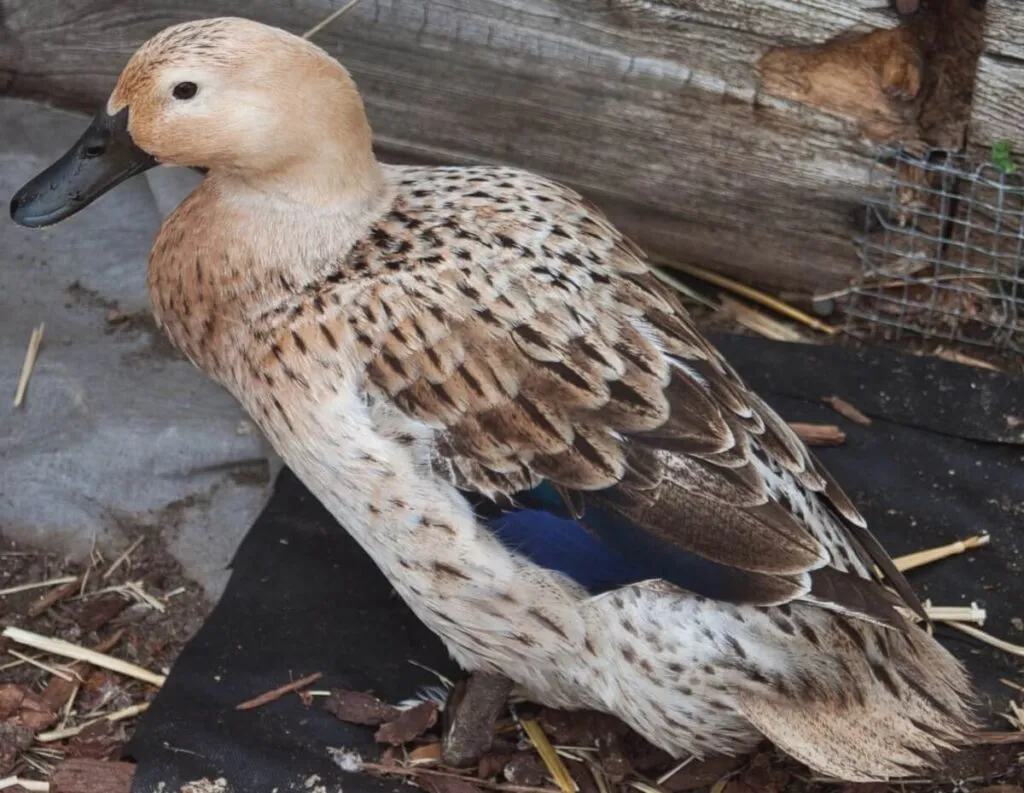
A female Welsh Harlequin with a dark gray bill. Photo credit: “Here’s Mama! She’s a layer too!” (CC BY-NC 2.0) by Steve Wedgwood
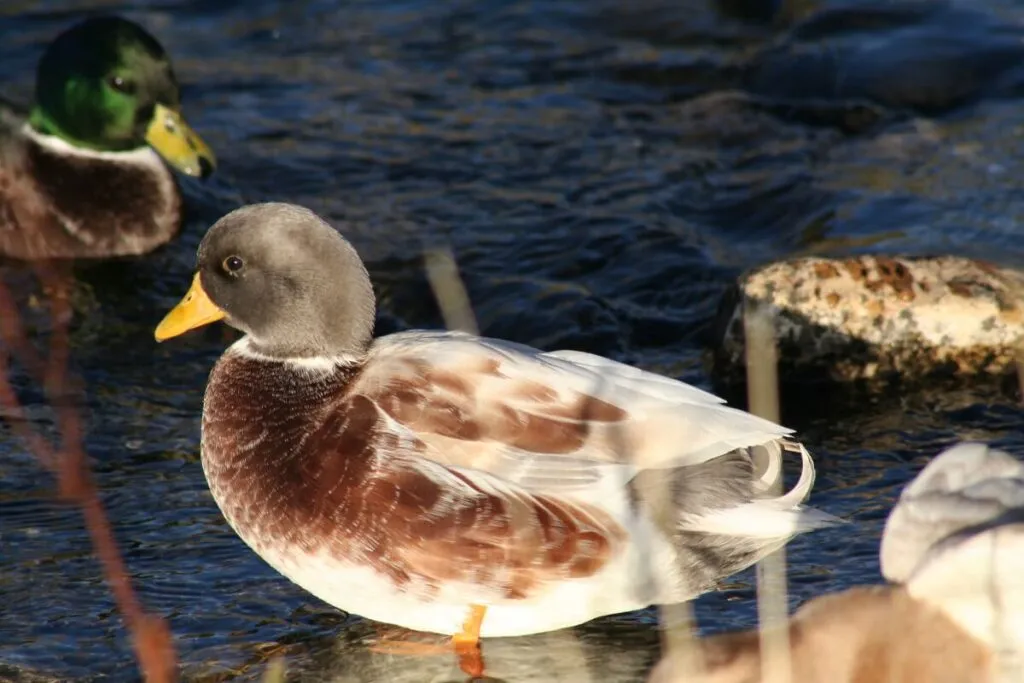
A Blue Butterscotch Call drake. Photo used with permission from Beau McLean of Duck Creek Farm.
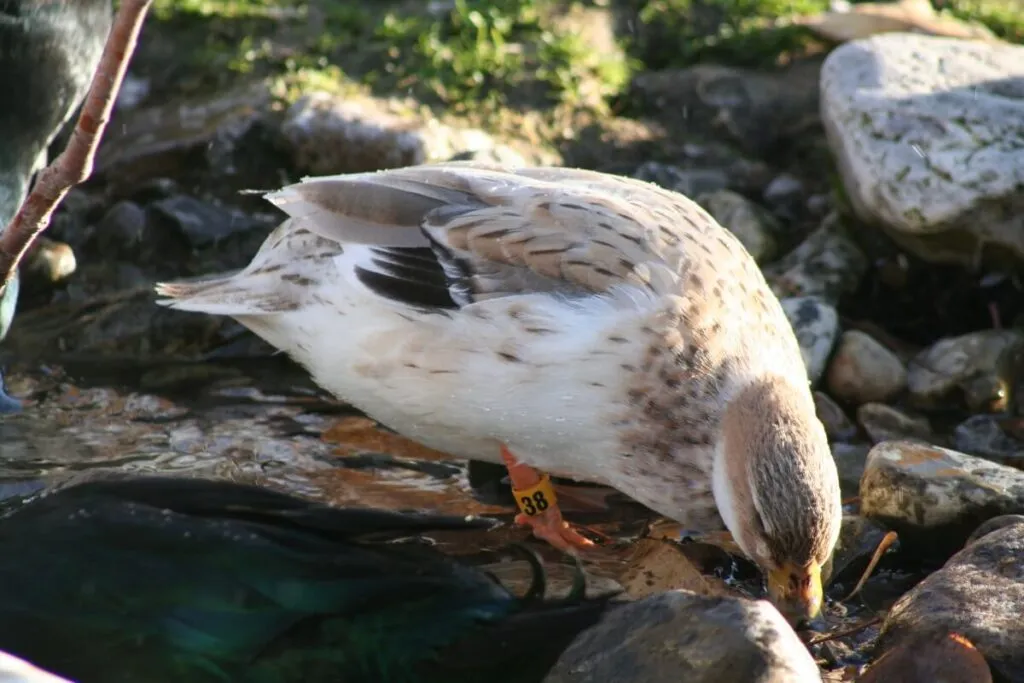
A Blue Butterscotch Call duck. Photo used with permission from Beau McLean of Duck Creek Farm.
Here’s a list of duck breeds where males and females are colored differently (while in nuptial plumage):
- Abacot Ranger
- Alabio
- Australian Spotted
- Bali (some color variations)
- Blue Swedish
- Buff Orpington
- Call (some color variations)
- Crested (some color variations)
- Duclair
- Dutch Hookbill (some color variations)
- Indian Runner (some color variations)
- Khaki Campbell
- Mallard
- Rouen
- Rouen Clair
- Saxony
- Silver Appleyard
- Silver Appleyard Miniature
- Silver Bantam
- Welsh Harlequin
Here are the breeds where males and females look the same:
- Ancona
- Aylesbury
- Bali (some color variations)
- Call (some color variations)
- Cayuga
- Crested (some color variations)
- Dutch Hookbill (some color variations)
- East Indies
- Indian Runner (some color variations)
- Magpie
- Muscovy
- Pekin
- Shetland
Method #6: Behavior
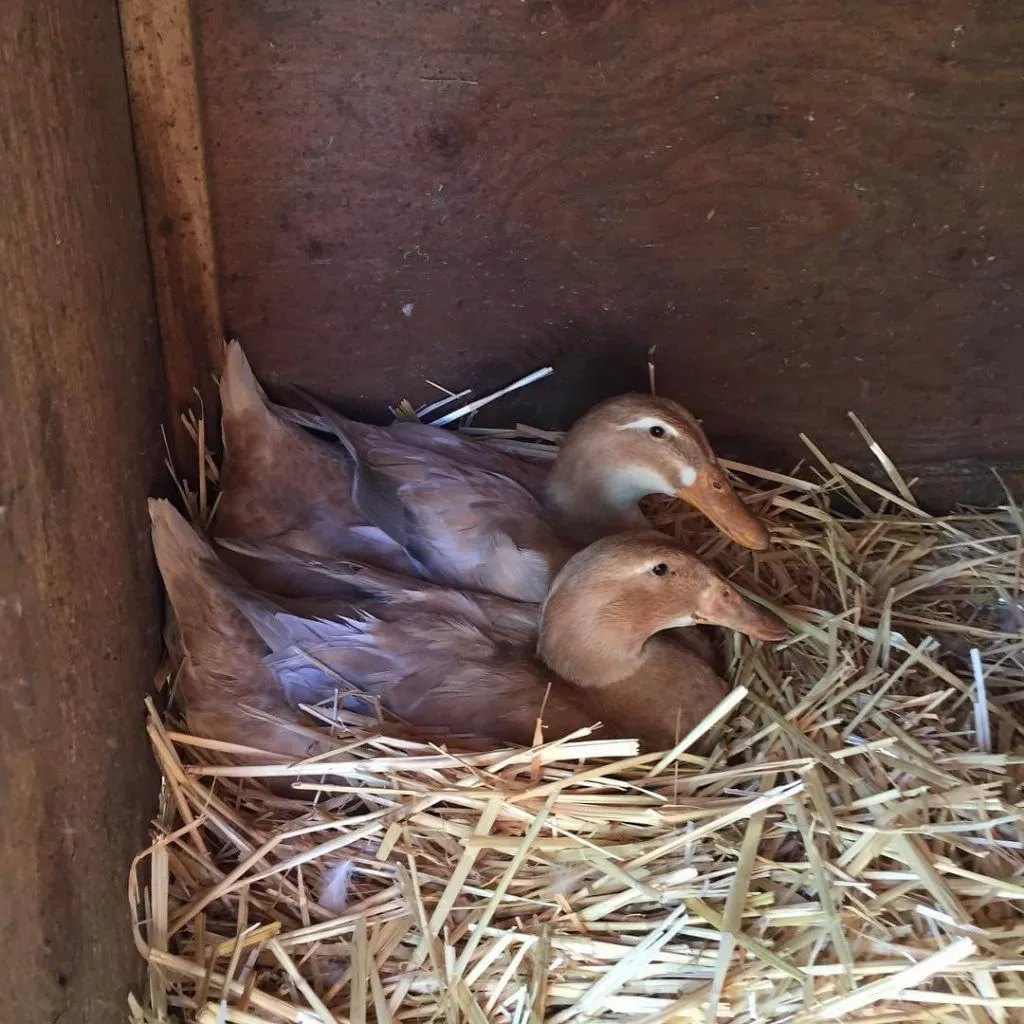
Behavioral differences between male and female ducks show up once ducks reach sexual maturity.
Mating
Ducks usually start mating around 16 weeks of age, or anywhere from 12-20 weeks. This can give you a good clue as to their gender.
Unfortunately, even mating may not necessarily prove anything. For one thing, if you don’t have any males or not enough, females will sometimes mount each other, and in the absence of females, males may mount each other. More commonly, though, you’ll see pecking order fights between either two males or two females, and if you’re new to ducks, you might confuse these fights for mating.
Eggs
By five or six months of age, young ducks will start thinking about laying. You might see young females hunting for nests and testing them out, and then it won’t be long before they start laying. Nesting behavior and laying, of course, prove that your duck is a female.
Leave a comment
Your email address will not be published.